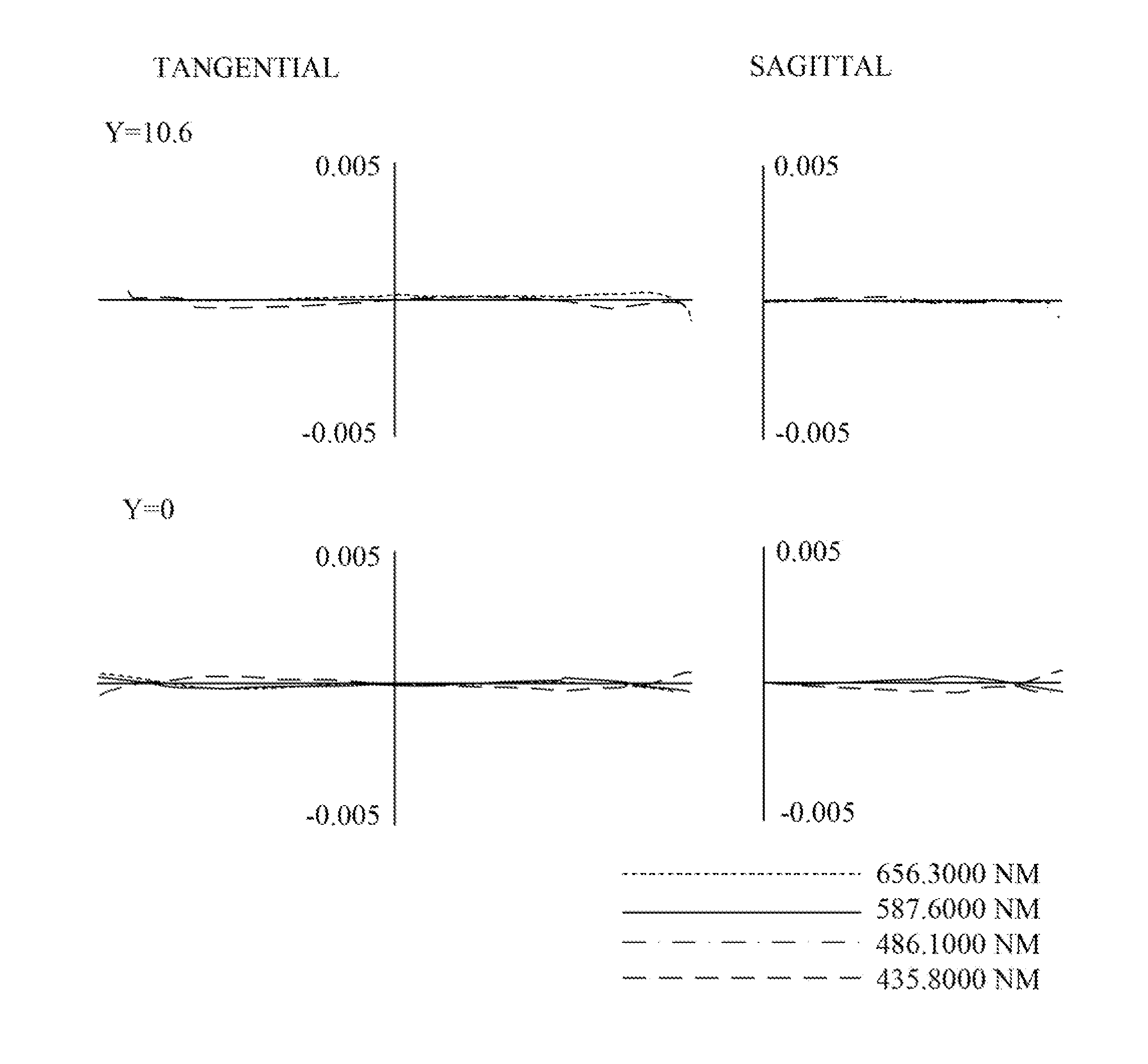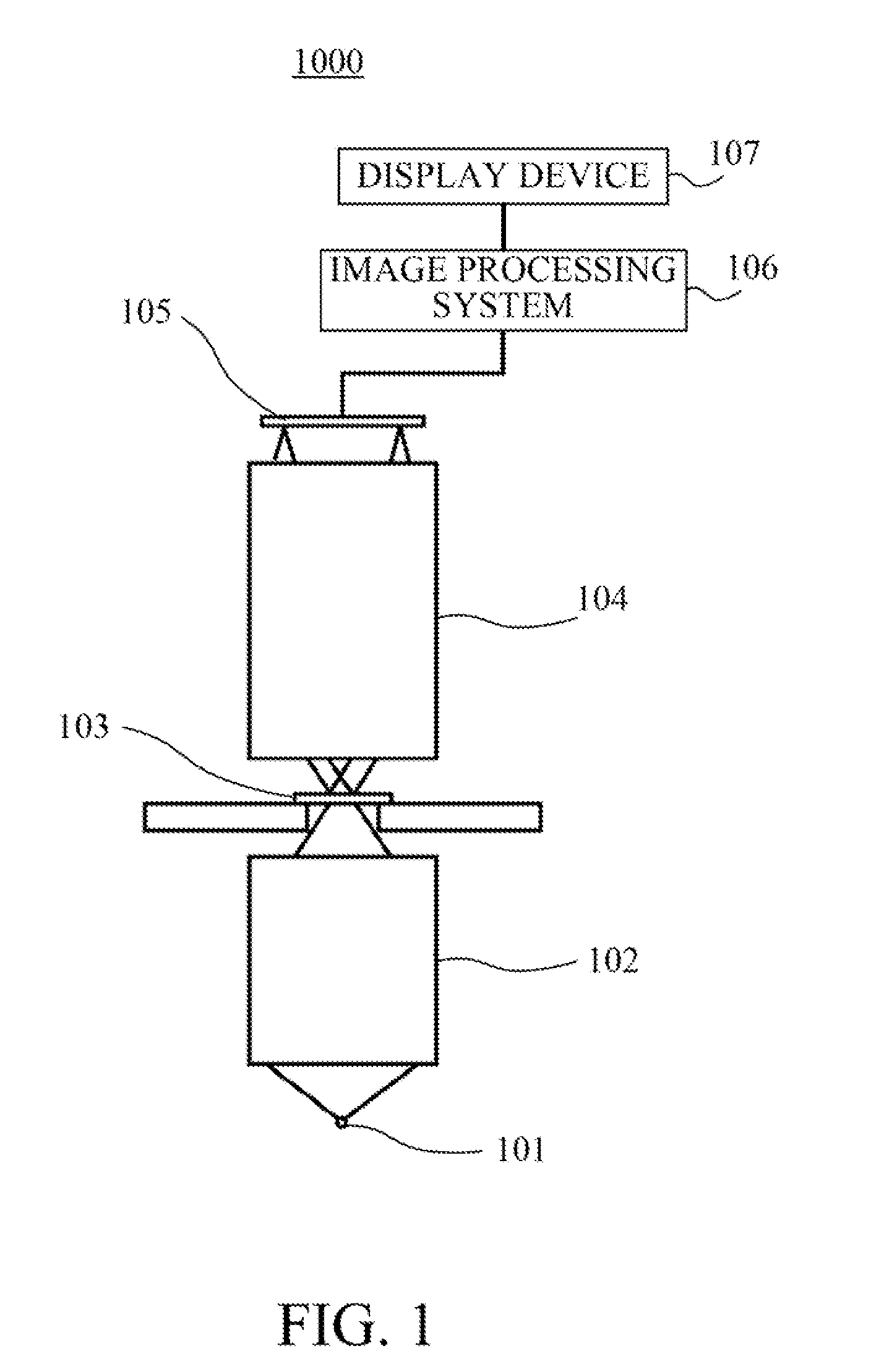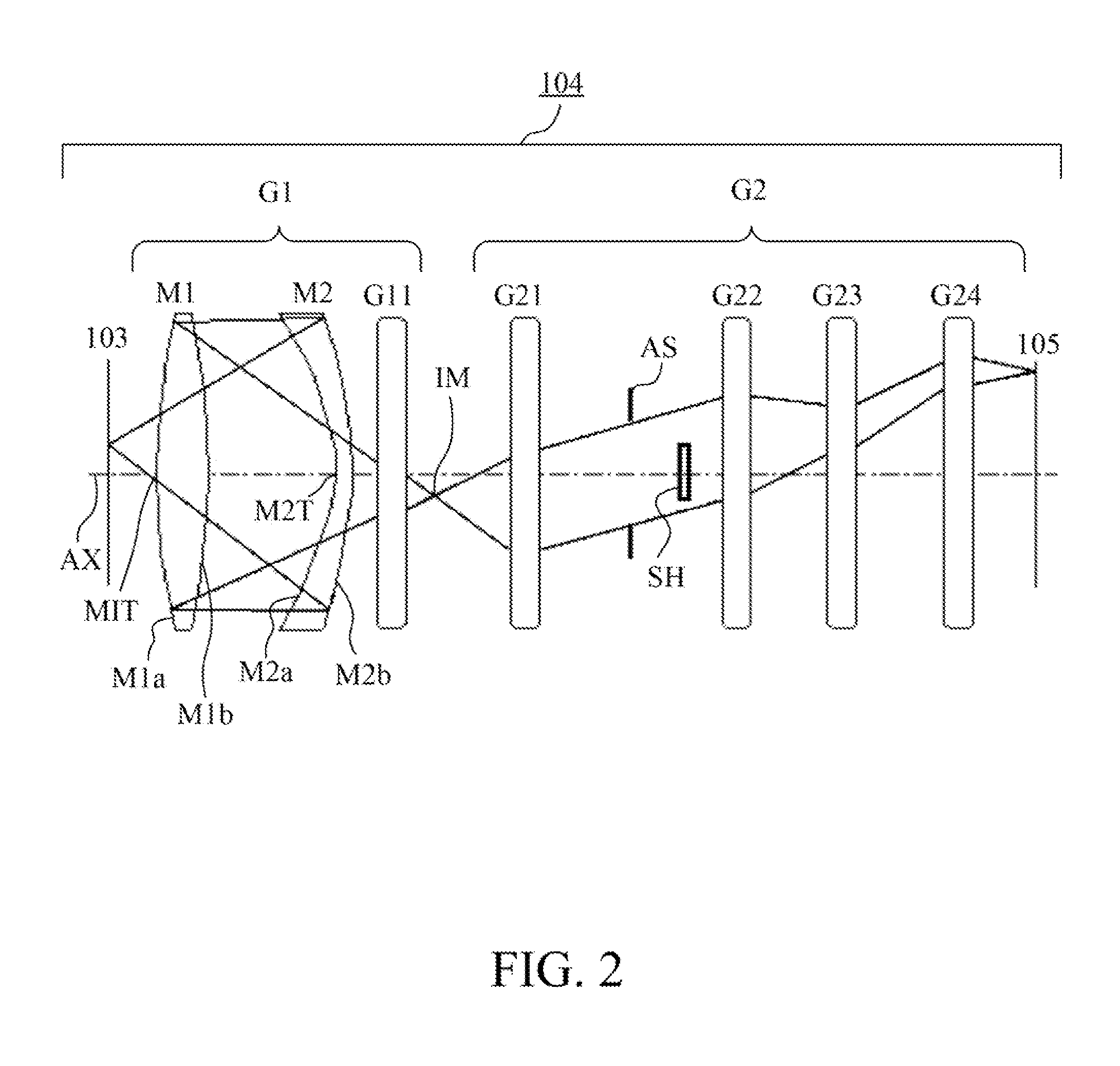Catadioptric system and image pickup apparatus
a catadioptric system and image pickup technology, applied in closed circuit television systems, television systems, instruments, etc., can solve the problems of insufficient observation area, insufficient field of view, and insufficient time, and achieve good both-side telecentric properties, reduce various aberrations over a wide wavelength range, and high resolution power
- Summary
- Abstract
- Description
- Claims
- Application Information
AI Technical Summary
Benefits of technology
Problems solved by technology
Method used
Image
Examples
example 1
[0055]FIG. 3 is a cross-sectional view of main parts of the catadioptric system that is a first example (Example 1) of the present invention. In FIG. 3, reference numeral 104A denotes the catadioptric system, reference numeral 103 denotes the sample (object surface), and reference numeral 105 denotes the image pickup element (image surface). Reference character AS denotes the aperture stop, and reference character IM denotes the intermediate image. Moreover, reference character G1 denotes the first optical imaging system constituting the catadioptric part, and reference character G2 denotes the second optical imaging system constituting the dioptric part. The first optical imaging system G1 includes the first optical element (Mangin mirror) M1, the second optical element (Mangin mirror) M2 and the lens group G11. The second optical imaging system G2 includes the lens groups G21-G24 and the aperture stop AS.
[0056]In the catadioptric system 104A shown in FIG. 3, a light flux exiting f...
example 2
[0065]FIG. 5 is a cross-sectional view of main parts of the catadioptric system 104B that is a second example (Example 2) of the present invention. In FIG. 5, elements identical to those in FIG. 3 are denoted by the same reference numerals and characters as those in FIG. 3. The configuration of this example is nearly same as that of Example 1. The optical path of the light flux from the sample 103 to the passage through the second optical element M2 in this example is same as that in Example 1.
[0066]In this example, the light flux that has passed through the central transmissive portion M2T of the second optical element M2 passes through the lens group G11 (lenses L1-L3) and then forms the intermediate image IM of the sample 103. The light flux from the intermediate image IM sequentially passes through the lens group G21 (lenses L4-L7) having a positive refractive power, the aperture stop AS and the lens group G22 (lenses L8-L10) having a positive refractive power. The light flux fu...
example 3
[0072]FIG. 7 is a cross-sectional view of main parts of the catadioptric system 104C that is a third example (Example 3) of the present invention. In FIG. 7, elements identical to those in FIG. 3 are denoted by the same reference numerals and characters as those in FIG. 3. The configuration of this example is nearly same as that of Example 1, but is different from that of Example 1 in that the second optical imaging system G2 is constituted by lens groups G21 to G25. The lens group G21 constitutes a front lens group, and the lens groups G22-G25 constitute a rear lens group.
[0073]The optical path of the light flux from the sample 103 to the passage through the second optical element M2 in this example is same as that in Example 1. In this example, the light flux that has passed through the central transmissive portion M2T of the second optical element M2 passes through the lenses L1 and L2 and then forms inside the lens L3 the intermediate image IM of the sample 103. The light flux f...
PUM
 Login to View More
Login to View More Abstract
Description
Claims
Application Information
 Login to View More
Login to View More - R&D
- Intellectual Property
- Life Sciences
- Materials
- Tech Scout
- Unparalleled Data Quality
- Higher Quality Content
- 60% Fewer Hallucinations
Browse by: Latest US Patents, China's latest patents, Technical Efficacy Thesaurus, Application Domain, Technology Topic, Popular Technical Reports.
© 2025 PatSnap. All rights reserved.Legal|Privacy policy|Modern Slavery Act Transparency Statement|Sitemap|About US| Contact US: help@patsnap.com



